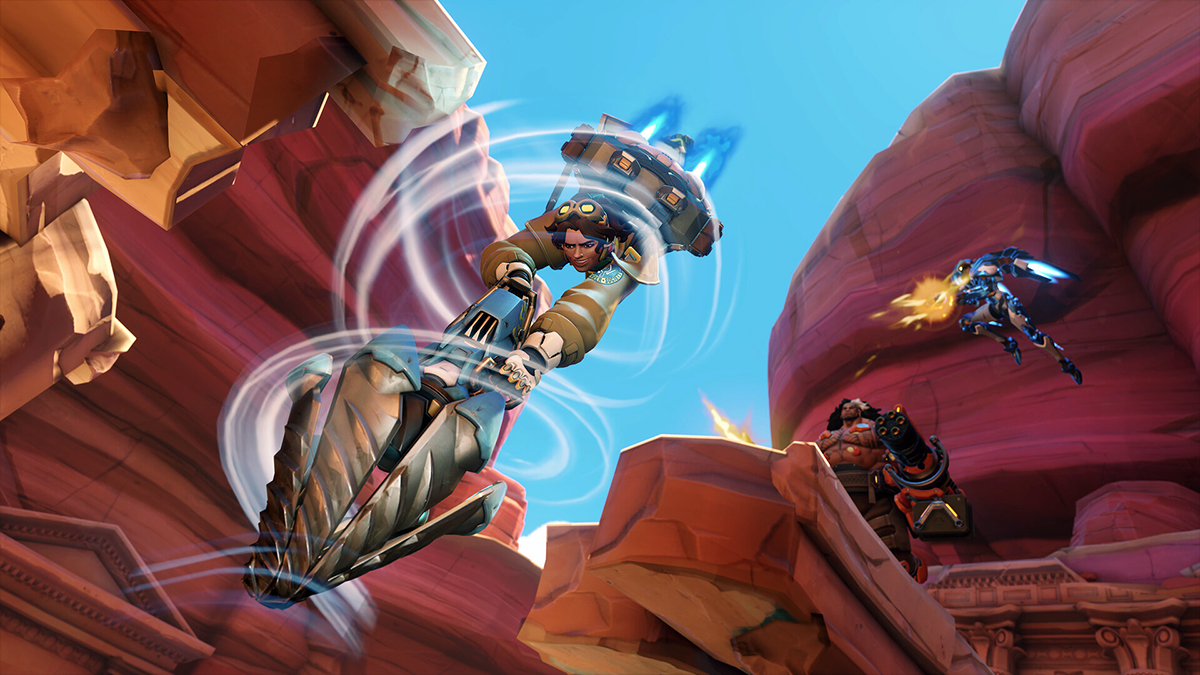I’ve been hugely critical of Overwatch – and later Overwatch 2 – over the years despite thinking of it as one of the most impressive FPS releases of the last decade. It’s hard for me to think of a bigger ‘massive new gaming IP with tons of potential’ fumble than Overwatch, and yet, Blizzard might be about to bring it back from brink of extinction.
Following a number of half-baked collaborations in recent times to milk the remaining addicts even harder than before and little else, I was pretty damn sure that OW2 would be going into life support in less than a couple of years. After its confusing launch in 2022, which was disappointing for veterans due to misguided design choices that seemed to be chasing a competitive crowd that was never meant to be the game’s hardcore audience, the game I once loved was nowhere to be seen.
The class-based roster of characters had been far too overtuned and ‘flattened’ in search of a wider appeal the game had never lacked to begin with, resulting in a hodgepodge of colorful personalities and striking designs that weren’t nearly as distinct as they’d been in the past. The downsizing to 5v5 never made much sense outside of competitive teams, and with the game now reducing its esports presence, it feels like all that tinkering to chase Call of Duty and Valorant players never paid off and only alienated the casual crowd that had found a perfect FPS for them whether they played Unranked or Ranked.

It’s the kind of market-driven thinking that has devalued other major FPS franchises like Battlefield. AAA publishers have a great thing, but can’t stop looking at that one even greater thing, so they tell otherwise talented dev teams to change and change the cool unique thing they had going until they’ve Frankenstein’d it to death, lost the love of the OG players, and failed to capture what makes entirely different games click with players in entirely different ways. Go figure!
Even going free-to-play and finally embracing Steam as well as crossplay to bring in more players didn’t do much to fix Overwatch 2 and its popularity issues. Mind you, Blizzard’s most recent IP remained huge enough to avoid disappearing with the wind, often carried by its eye-catching aesthetic alone. But seeing a game that once threatened to give birth to a massive transmedia franchise (it truly was the biggest game of 2016) fail to keep veterans interested and to morph into a more competitive version of itself has been painful.
A little over a month ago, we also learned that PvE was 100% dead after the suspicious downscaling that had happened over the years. It’s an especially hilarious (and terribly sad) outcome for what once was sold as the sequel’s defining trait: A bigger focus on the universe-building teased by the stunning animated shorts and sparse comic books the company had been putting out since its 2016 debut. I can hardly remember anyone going “Overwatch should really double down on PvE” back in the day in spite of some cute limited-time events, yet Blizzard and the OW team rebuilt the entire game, slowing down content development for the first iteration, to chase an entirely different chunk of the FPS market.

The Microsoft acquisition of Activision-Blizzard, which isn’t even a year old, may have saved OW2 (ironically), as the team’s continued hemorrhage of key creative talent and all-time-low morale hasn’t stopped them from delivering a strong Season 10 update. It walked back many of the sequel’s most criticized changes, such as locking new heroes behind either a paywall or joy-killing grinds, and actually had the intention of setting the game on the right path: that of a welcoming casual-oriented FPS experience with strong class design.
Mind you, its Battle Pass system and overall rewards-progression pacing remain some of the worst I’ve ever experienced, and all of their efforts to rethink ‘free’ rewards and customization unlocks can’t still match the overall satisfaction that the (admittedly flawed and dangerous) loot boxes system provided. When it comes to monetization, there’s no easy way to make everyone happy this late into Overwatch’s life cycle, and I’ve personally moved on from complaining about that aspect of the game. Activision-Blizzard will, however, try to pump those numbers up after some truly bad numbers in recent times, so stay tuned for more terrible changes.
The Season 10 tweaks and a renewed promise of making us (those who’d left in disgust) care about Overwatch again tempted me just enough to reinstall OW2 on Steam and try the latest heroes. To my surprise, I actually had a great time, and I’ve been playing the game on-and-off again for the past few days. It still isn’t prime OW1, but it feels way more focused and flexible – without dropping the class-based element – than whatever OW2 was at launch, when DPS characters dominated the battlefield and even tanks were jumping around and going after kills like in a juiced-up version of Black Ops 4 (another ill-advised entry in an otherwise effective franchise).

Overwatch was always about true teamwork, about strengthening the bonds between the wildly distinct characters. Their design flaws were there on purpose and needed to be ‘fixed’ by other heroes. That was the main appeal of the game. It was meant to be an evolution of what Valve had achieved with Team Fortress 2 (a 2007 shooter that has often felt more alive than Overwatch) instead of yet another MOBA full of jack-of-all-trades characters.
It’s far too soon to declare that “Overwatch is back, baby” (sorry, Winston), but it’s in a far better place right now than one year ago. While it seems that everyone at Blizzard is still scrambling and trying to figure out what exactly the game needs at the moment to make a strong comeback, I believe it’s not a headless chicken version of a once-great FPS for the first time in years. There might be hope for this one yet, but I’m scared of raising my hopes too much.






Published: May 4, 2024 09:00 am